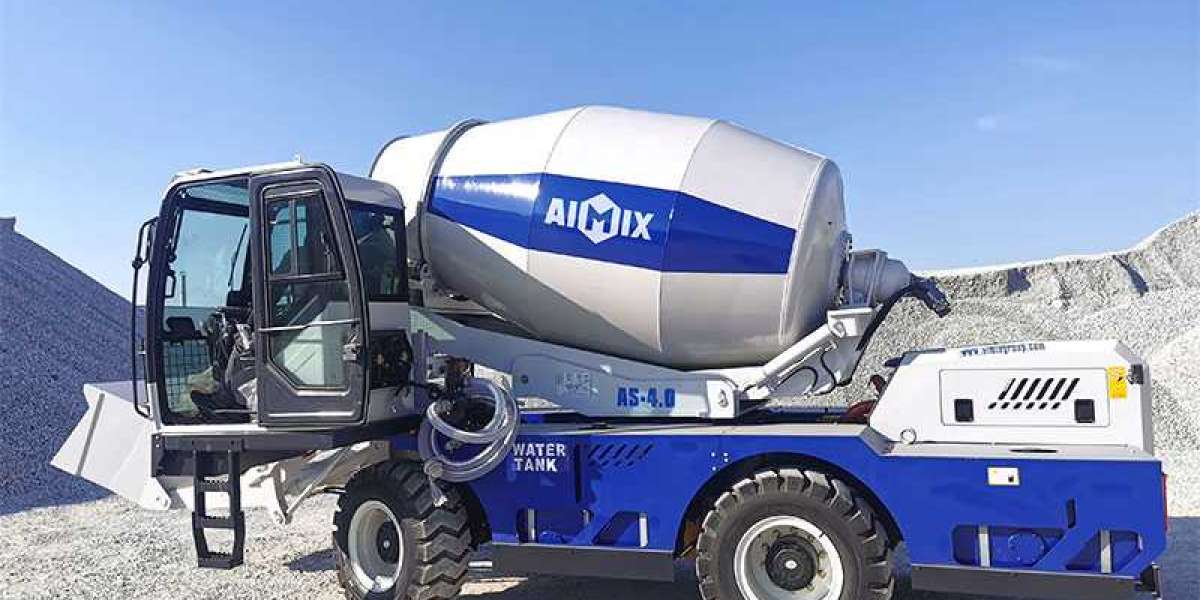Self-loading concrete mixers have become indispensable tools in the construction industry, offering efficiency and convenience in on-site concrete production. However, operating these machines requires careful attention to safety and proper procedures to prevent accidents and ensure optimal performance.
Understanding the Equipment:
Before operating a self-loading mixer, it's essential to familiarize yourself with the equipment's components, controls, and safety features. Take the time to read the manufacturer's manual and attend any training sessions provided. Understanding how the self loader concrete mixer works and how to operate it correctly is crucial for safe and efficient operation.

Performing Pre-Operation Checks:
Prior to starting the self-loading mixer, conduct thorough pre-operation checks to ensure that the machine is in proper working condition. Check for any signs of damage, leaks, or loose components. Inspect the tires, brakes, hydraulic systems, and mixing drum for any abnormalities. Verify that all safety guards and devices are in place and functioning correctly.
Safety Gear and Personal Protective Equipment (PPE):
Wear appropriate personal protective equipment (PPE) when operating a self loading concrete truck mixer. This may include a hard hat, safety goggles, high-visibility clothing, gloves, and steel-toed boots. PPE helps protect against injuries from falling objects, flying debris, and other hazards commonly encountered on construction sites.
Stabilizing the Machine:
Ensure that the self-loading mixer is parked on a stable and level surface before operating it. Use stabilizers or outriggers if necessary to prevent the machine from tipping over during loading or mixing operations. Avoid operating the mixer on steep inclines or uneven terrain, as this can compromise stability and pose a safety risk.
Safe Loading Procedures:
When loading materials into the mixer, follow safe loading procedures to prevent injuries and accidents. Use the integrated loading shovel or conveyor system to add aggregates, cement, and water to the mixing drum. Avoid overloading the machine beyond its rated capacity, as this can affect stability and performance. Exercise caution when handling materials to prevent spills or injuries.

Operating Controls:
Familiarize yourself with the operation of the mixer's controls and follow proper operating procedures. Use the controls to adjust drum rotation speed, discharge rate, and other parameters as needed. Pay attention to warning lights, alarms, and indicators on the dashboard to monitor machine performance and detect any issues promptly.
Maintaining Clearances and Visibility:
Maintain clearances around the self-loading mixer to ensure safe operation. Keep bystanders and other workers at a safe distance from the machine, especially during loading and mixing operations. Use spotters or signalers to assist with maneuvering the mixer in tight spaces. Maintain good visibility from the operator's cab by keeping windows clean and unobstructed.
Avoiding Contact with Moving Parts:
Exercise caution around moving parts such as the mixing drum, conveyor belt, and hydraulic components. Keep hands, clothing, and tools away from rotating or moving parts to prevent entanglement or crushing injuries. Never attempt to service or repair the machine while it is in operation, and always shut off the engine and engage safety locks before performing maintenance tasks.
Emergency Procedures:
Be prepared to respond to emergencies or equipment malfunctions effectively. Familiarize yourself with emergency shutdown procedures and the location of emergency stops and fire extinguishers on the machine. In the event of an emergency, remain calm, and follow established protocols to ensure the safety of yourself and others.
Regular Maintenance and Inspections:
Finally, prioritize regular maintenance and inspections to keep the self-loading mixer in optimal condition. Perform routine checks of fluid levels, lubrication points, and wear parts, and address any issues promptly. Follow the manufacturer's recommended maintenance schedule and keep detailed records of maintenance activities performed.
In conclusion, operating a self-loading concrete mixer requires diligence, attention to detail, and adherence to proper safety procedures. By following precautionary measures and exercising care at all times, operators can minimize the risk of accidents and injuries and ensure the safe and efficient operation of these valuable machines on construction sites.






